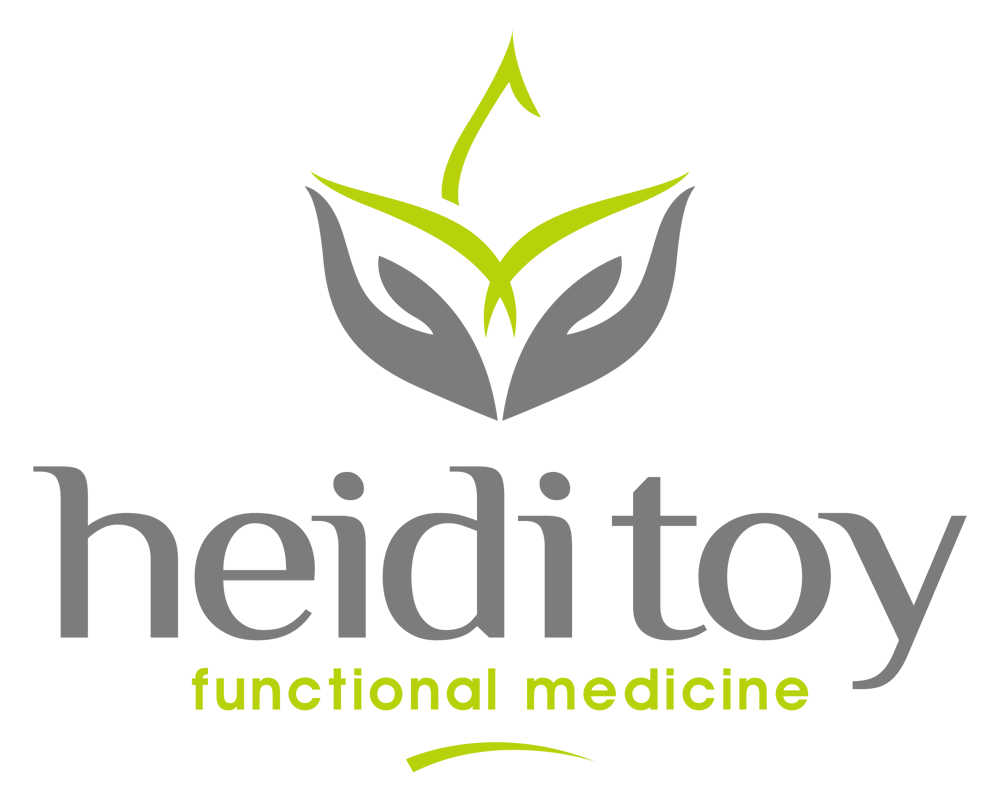Essential Nutrients for Fighting the Cold and Flu
Strengthen your own immune system and give your body the natural ability to fight any bacteria, virus, or microbe.
You see the signs at every pharmacy, and the doctor asks every time you check in: “Have you had your flu shot?” Though November and December are prime months for flu season, you can really catch the flu at any time, so better be prepared, right? Well, there are a number of reasons why one should reconsider getting a flu shot.
Flu shots contain mercury. Mercury is one of the most hazardous neurotoxins because it destroys brain tissue. Easily destroys brain tissue. A common urban myth is that the mercury has been taken out of vaccines. This is not true. Several of the flu vaccines contain a neurotoxic ingredient called thimerosal. This is a fancy term for mercury.
The purpose of the flu shot is to assist the body’s ability to fight specific strains of flu. However, the problem here is that every year, the influenza viruses in the seasonal flu vaccine are selected through calculations about what flu viruses are most likely to cause illness in the coming season. The FDA, acting in concert with the CDC, decides which influenza vaccine strains should be sold in the U.S. Do you know how the flu strain is picked to put into the vaccine every year? The “experts” guess.
Instead of getting a flu shot, which is both ambiguous and dangerous in what it has to offer, why not strengthen your own immune system and give your body the natural ability to fight any bacteria, virus, or microbe?
Most folks who contract the flu already have a subclinical deficiency of a nutrient, which means that the body cannot function at optimal performance. Add emotional stress, weather changes, and/or daylight changes to the borderline deficiency and we have the recipe for a body functioning at a lower performance level. The result is that bacteria and viruses gain temporary control--we call that the cold or the flu.
Two major nutrient deficiencies that I test for in my clinic are zinc and vitamin D because both of these nutrients play a critical role in warding off colds and flus.
Zinc is crucial for a healthy immune system and is a co-factor in over 200 enzyme systems. We need zinc to make proper amounts of hydrochloric acid HCL (see my blog Got Heartburn?). Zinc is also necessary for so many other functions:
- Improves of cardiovascular function
- Supports female and male reproductive health
- Increases wound healing
- Produces healthy skin cells
- Stimulates GI cell repair
- Reduces inflammation
- Creates healthy cell membranes
- Metabolizes essential fatty acids (Omega 3/6)
- Produces white blood cells
Zinc has a direct link to our body’s T-cells. If the body has a proper level of zinc, helper T-cells orchestrate an immune response and play important roles in all arms of immunity. Killer T-cells hunt down and destroy cells that are infected with germs or cells that have become cancerous. However, low zinc produces a direct and rapid decline in T-cell function in both helper and killer. Four out of five people I test in my office for zinc deficiency have suboptimal levels. Unfortunately, our soil and water is devoid of minerals and, therefore, so are we.
Vitamin D is another crucial nutrient that aids in building a healthy immune system, and almost everyone is deficient in it. Vitamin D, which is more like a hormone than a vitamin, is responsible for the regulation of over 2,000 genes in our body. Like zinc, Vitamin D has many roles in the body:
- Maintains blood sugar
- Supports a healthy gut
- Reduces inflammation
- Activates the immune system against microbes
- Alkalizes pH
- Maintains healthy bone mass
Vitamin D is a fat soluble vitamin along with Vitamins A, E, and K. Vitamin D should be taken with fat at your largest meal of the day.
Studies show that Vitamin D helps the body make more glutathione in both the liver and the brain. Glutathione is the body’s master antioxidant and without it we are not able to detox metals, toxins, or chemicals. In scientific studies, when subjects were given Vitamin D, glutathione production was increased, however, those who had a zinc deficiency had the lowest increase [1]. Glutathione, the master antioxidant, outweighs the importance of any antioxidant you can take by mouth. It affects every system in the body, especially the immune system, the nervous system, the GI system and the lungs. Glutathione cannot be taken as a supplement; it must be made in the body.
Another vitamin worth mentioning when talking about the flu is vitamin C. Most people know that vitamin C is great for combating the common cold, unfortunately many people lack the enzyme that is required for the last step of Vitamin C synthesis. The body will make-do by recycling the oxidized version of vitamin C, but in order to complete synthesis, glutathione must be present.
Additionally, most people get their vitamin C from fruit or juice (i.e. consume more sugar), which places the uptake of vitamin C in direct competition with the uptake of sugar by the cell. This is due to what is known as the Glucose Ascorbate Antagonism (GAA) theory. The GAA was aptly named in the 1970’s when Dr. John Ely discovered that glucose and vitamin C (ascorbate) have a very similar chemical makeup. When glucose levels are elevated, they compete with, and effectively restrict, vitamin C from entering the cells. Blood glucose levels become elevated by eating sugar, or if the body is insulin resistant and diabetic. Both glucose and vitamin C depend upon the pancreatic hormone insulin and its signaling effects in order to get into the cells. This means that the greater the amount of circulating blood sugar, the less vitamin C will enter the cells. This is one of the many ways that sugar dampens our immune system and why we face more colds and flu during the highest sugar-consumption season of the year: Halloween through Valentine’s Day.
The most effective way to combat disease and illness is not necessarily through a flu shot. You need to develop a wellness program that includes a whole food diet and a professional grade supplement regime year round to help support optimum nutrition. Exercise, even moderate, is also key--get and keeps everything moving! Make your body its own best defense, without pumping a bunch of “guesswork” vaccines into it.
The nutrients mentioned above are crucial to our wellbeing. For more information, contact me through my website
or purchase some of these amazing nutrients in my Shop
1. https://www.ncbi.nlm.nih.gov/pubmed/23770363
Don't Miss Out On More!

Heidi Toy FNTP
I help people all over the world heal by identifying and treating the root cause of their body imbalances. Through diet and nutrition, I guide them towards wholeness and balanced lives.
Heidi Toy Functional Medicine Blog

For many of us, our experience with food comes with some sort of baggage. Maybe you eat to cope with stress, anxiety or depression. Maybe you’ve grown up with value-words placed on food such as “junk” and “healthy,” and told you couldn’t eat the “good stuff” (brownies and ice cream) until you finished the “yucky stuff” (broccoli and lettuce). Or, even more serious, maybe you or a loved one has struggled or is struggling with an eating disorder. Food is amazing and life-giving. It can be used as a means to celebrate, socialize, or simply just provide fuel for the body. Our relationship with food shouldn’t be a difficult one, it should be an enjoyable one. A way to get to that healthy place in your relationship is to practice mindful eating. Mindfulness is a Buddhist concept of mediation that can help you recognize emotions and physical sensations present. Through mindful eating, you can learn to truly pay attention to your experiences, cravings and physical cues. The basics of mindful eating are: Eat slowly, without distraction. If you are eating with others, take a least five minutes at the start of the meal to enjoy the food on your plate before engaging in discussion. Pay attention to your body--are you still hungry, or are you getting full? Learn to distinguish between cravings and true hunger. Use all your senses when you sit down to a meal. Make an effort to notice how the food looks, smells, tastes, feels in your mouth, and sounds when you chew. Appreciate your food, who has prepared it (even if it’s you--what an accomplishment!), and where it comes from. Being mindful of your experience will help you slow down while eating. This can prevent overindulgence by making the act of eating intentional instead of automatic. It will also help you become aware of triggers that make you want to eat (are you truly hungry at 9pm every night when you sit down to watch that Netflix show, or do you just pour yourself a bowl of Chex Mix because that’s what you always do?). Knowing your triggers can give you time to process what’s truly going on and the ability to react properly.

Here are the essential functional medicine steps for Fifth Disease! If your child comes home with bright red cheeks that look like they’ve been “slapped,” chances are they may have fifth disease, also known as erythema infectiosum. This mild viral illness, caused by parvovirus B19, is common in kids and often spreads t

Successfully healing Adrenal Fatigue requires a holistic approach focussed on fixing the root cause of your problems and supporting your body through the healing process. This means we are going beyond just temporary symptom relief. We want you to return to vibrant health so you can get back to the active and healthy lifestyle that Adrenal Fatigue is holding you back from. (Adrenal Fatigue is more accurately known as HPA-D. Check out my blog HPA-D vs Adrenal Fatigue to learn more.)Again, we would be completing further testing to get to the root cause of your issues, but this protocol is a great starting point for healing. We focus on five essential areas for fast and long-term healing.

I want it! Sooooooo bad. But I want to lose weight, too. It’s not on my list of healthy, squeaky clean healing foods, but what will one little bite hurt? I can start again fresh and clean tomorrow. When brownies call your name and you are trying to break up with them, it is difficult to avoid the urge to want to indulge. But you know if you give in that you will berate yourself with guilt for the next 24-48 hours and the tsunami of eating everything off-plan will take over your life. One bite will start an avalanche... But you just can't stop thinking about the pan of brownies you made for the kids.

Did you know most people didn’t have refrigerators in their homes until well into the 1900’s? It wasn’t even invented for large scale commercial use until the mid 1800’s [1]. So how did people keep their milk cold and make their food last longer? Fermentation. It sounds like a gross concept, because we often associate fermentation with a bad odor, but foods like cheese, yogurt, sauerkraut and pickles are all fermented foods. And those aren’t gross, are they? Well, some might disagree with me about sauerkraut, but that’s beside the point. Fermented foods are digestive aids. Microscopic living organisms in fermented foods help extend the food’s shelf life, enhance flavor, and help the body absorb minerals. These organisms pre-digest the food, getting rid of harmful components, and create more vitamins and enzymes than the food began with. Enzyme-rich foods have many benefits including [2]: Increase digestibility of food we eat Boost immune system Increase alkalinity; neutralizing pH levels Provide a healthy balance of friendly flora in the gut (Learn more about your microbiome in my other blog posts ) Tone the colon and help with elimination Control cravings for unhealthier foods Eliminate toxins and undigested wastes in the body In the “old days,” people use to ferment all kinds of foods through pickling, canning, pasteurization and added salt. Nowadays, however, large scale fermentation has lost many of its nutritious benefits due to the need for speed to get the product on the shelf as fast as possible and as cheap as possible. The only true fermented foods you will find are sauerkraut, kombucha, yogurt and kefir, beans, wine and beer, some meats (such as salami and pastrami), legumes and nuts (such as tofu, soy sauce and miso), sourdough bread, and various kinds of vegetables [3]. Fun facts about sauerkraut: The Germans “stole” it from the Chinese! Sauerkraut (probably not labeled as such for the Chinese, but the same recipe) was one of the main foods for those who built the Great Wall of China. Genghis Khan brought it to Eastern Europe during an invasion. It also contains high levels of vitamin C, and sailors often took it on long journeys to prevent scurvy.

How can we best keep blood sugar stable? Do what our body is designed to do – use fat for energy. Our species did not survive the Ice Age because of vanilla coffee lattes and cheesecake. Throughout most of our history, we ate a diet that was likely 50-70 percent fat. Look at the old family photo albums, specifically pictures of people in the first half of the 1900s, before we had so many processed foods. You won’t see many fat people--in fact, most look darn skinny. If they lived on the farm, they ate lots of eggs, meat, milk, and vegetables out of their own backyards. “Diet foods” were non-existent. Heart disease was almost non-existent. Our metabolism is designed to work much better with fats better than with sugar. Fats provide the slow and steady fuel our body likes to use for energy. Think of fats as a slow-burning log on the fire. One log (i.e. one meal containing fats) lasts for hours. Starchy carbs, on the flip side, are like kindling. You constantly have to throw more twigs (chips, pasta, bagels) to keep the fire burning. The first step is to know your sugars by reading the labels, and then avoid said sugars as much as possible.








































































































